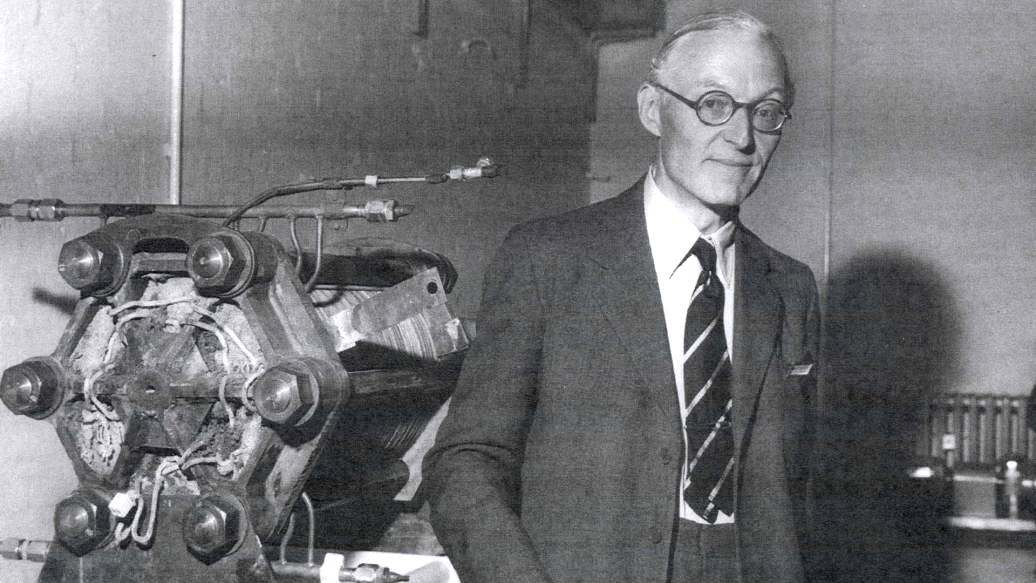Blue plaque honours developer of revolutionary hydrogen fuel cell at Marshall
Courtesy Marshall
An unveiling event for the plaque was held on 7th November 2024 at Marshall’s Cambridge headquarters, where Bacon developed his fuel cell technology into a working prototype. The plaque will be installed at 82 High Street, Little Shelford near Cambridge, where Bacon once lived.

Above: (left to right) Prof. Clemens Kaminski, Prof. Sam Stranks, Daphne Vivian-Neal, Henry Vivian-Neal, James Littlewood, Edward Bacon, Christopher Walkinshaw, Gina Vivian-Neal and Angelina Bacon.
Courtesy Marshall
The son of an electrical engineer, Bacon studied at Trinity College, Cambridge, taking the mechanical sciences tripos in 1925. Inspired by papers in contemporary research journals, he began to contemplate the possibility of storing energy in the form of hydrogen and releasing it as electricity.
Initial experiments took place at King's College, London and in 1946 the Electrical Research Association agreed to sponsor fuel cell research. The National Research Development Corporation agreed to finance further development of the Bacon fuel cell in 1957 at Cambridge University, at which point Marshall agreed to provide facilities and a team of engineers and chemists to support the project.

While working with the Marshall team, Tom Bacon (above) developed a 6 kW system which was demonstrated to the press in 1959. This system was further developed and patented by Pratt and Whitney of America, who went on to provide the electricity for Project Apollo.
The Bacon fuel cell was perfect for powering NASA’s spacecraft: it was lighter and much less bulky than batteries of the time, more efficient than 1960s solar panels and hydrogen and oxygen were already going to be on board the spacecraft for use as rocket fuel. Furthermore, the waste product from the reaction was water, which served as drinking water for the Apollo 11 crew.
The Apollo 11 mission lasted eight days, three hours, 18 minutes and 35 seconds and was powered by three fuel cells providing 400 kW of energy. Pratt and Whitney later congratulated Bacon on the efficiency of his fuel cells, saying they had been 100% reliable during the mission.
On a US visit, the then President Richard Nixon told Bacon: “Tom, without you we wouldn’t have gotten to the Moon.”
Bacon and his wife Barbara were also invited to 10 Downing Street to meet the three Apollo 11 astronauts, Neil Armstrong, Buzz Aldrin and Michael Collins.
Christopher Walkinshaw, Group Director of External Relations and Communications, Marshall, said: “Tom Bacon was an exceptional engineer whose vision helped humanity reach the moon.
“We are delighted that he is being honoured with a blue plaque and are very proud of Marshall’s role in the development and successful demonstration of his revolutionary fuel cell technology.”
Bacon received many honours including an OBE in 1967 and was named a fellow of the Royal Society in 1973. For the rest of his life, he continued to promote the fuel cell with its potential for clean energy.












